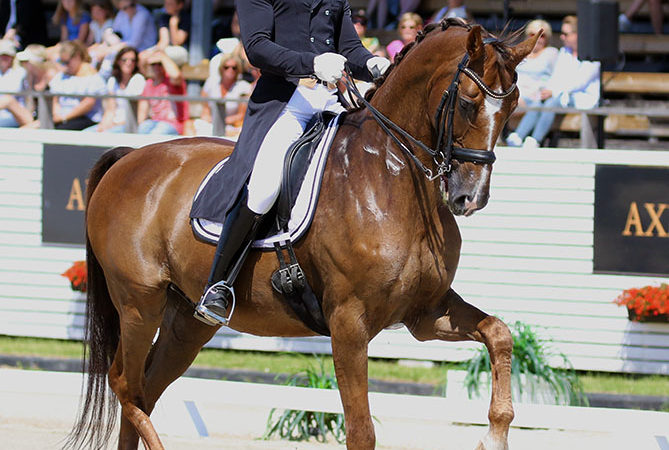First-Ever Ratings of Equestrian Safety Helmets Released by Virginia Tech After 2-Year Study
2 years ago StraightArrow Comments Off on First-Ever Ratings of Equestrian Safety Helmets Released by Virginia Tech After 2-Year Study
Top Two Equestrian Safety Helmets — Both Rated 5-Star by Virginia Tech Helmet Lab

#1 Champion Resolve X-Air MIPS 5* Price: $460 #2 TuffRider Carbon Fiber 5* Price: $58
Dec. 7, 2022
Virginia Tech Helmet Lab released its first-ever equestrian helmet ratings Tuesday after a two-year analysis by researchers at the college’s Department of Biomedical Engineering and Mechanic.
Of 40 helmets tested, the lab rated as No. 1 the Champion Resolve X-Air MIPS and the TuffRider Carbon Fiber as No. 2. Both were tested this year and were the only two to be awarded five stars.
The top rated Champion, made in Britain, cost $460 when purchased. The second ranked TuffRider, produced by the New Delhi, India company JPC cost $58.
The Virginia Tech Helmet Lab has tested safety helmets for several varsity and youth summer and winter sports including American football, ice hockey and cycling. It undertook testing of equestrian helmets with funding by private donors, led by equestrian enthusiast and philanthropist Jacqueline Mars and the U.S. Equestrian Federation, U.S. Hunter Jumper Association and the U.S. Eventing Association.
Virginia Tech reported that researchers analyzed more than 100 videos of riders falling off horses, precisely measured the hardness of the sand, dirt, grass, and synthetic surfaces at equestrian events, and dragged dummy heads and other equipment–and boxes and boxes of helmets–out to the school equestrian facilities to simulate falls.
The data was then taken back to the lab to recreate the events in a series of controlled, quantitative tests. Tests were used to assess for the first time 40 equestrian helmets from different manufacturers.
The lab sought to determine the performance of the helmets “if a rider’s head hits the ground in a fall, their helmet can determine whether the rider makes it through without an injury.”
The ratings applied to falls occurring at all gaits as well as jumping.
The lab said its testing also shed more light on what happens during real impacts in the equestrian arena and illuminated some gaps between the required safety standards the helmets have to pass before going on the market and the actual impacts they are subjected to when worn by a rider.
“Standards for equestrian helmets are typically based on severe impacts,” it said. “What we found is that a lot of riders come off at lower velocities, and many helmets are too stiff to effectively cushion those softer impacts. The helmets that perform better are able to deal with different energy levels.”
The ratings went beyond existing standards by using a formula that considered the rotational acceleration that occurs when a rider’s head hits the ground, in addition to linear acceleration.
In addition to the top two with five stars, 11 earned four stars and the rest three or lower.
The complete ratings are available here.

